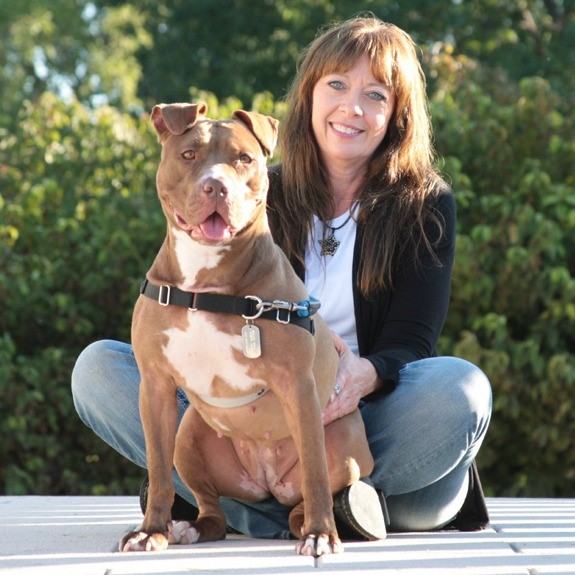Barks Blog
The Surprising Similarities Between Dogs and Toddlers and How We Can Use Them to Make Us Better Pet Professionals
by Judy Luther
In this post, I give a little insight into how dogs are much like toddlers when it comes to emotions and learning, and how teaching them like we teach toddlers can be so beneficial.
It was 2016 and I was heading to session #2 with a client who had a new puppy. During the first session, the mom confided she felt like she made a mistake getting a puppy with a toddler in the house, and she was considering sending the puppy back to the breeder.
When I arrived for the second session, I was welcomed by the housekeeper who showed me to the living room. As I entered the room, I saw the mom sitting on the floor between her toddler and the puppy. I watched for a minute from the doorway. On the floor were several flash cards with pictures. The mom pointed to a picture and said, “This is a car,” then pointed to another picture and said, “This is a train.” She then asked, “Which one is the car?” The puppy immediately jumped over her lap and put her nose on the picture of the car. The mom, noticing me, said, “This is the most amazing puppy. I can’t believe how brilliant she is. And to think I almost returned her to the breeder because she was so out of control.” She went on to tell me the puppy was calmer and more confident after our last session.
I will never forget this experience because it showed how impactful a cognitive approach to teaching can be for pets and their people. Keep in mind, this is just one example of how to apply what we know about how dogs learn. There are so many more!
How Dogs Think
In 2012, Gregory Berns, MD, PhD, started the Dog Project at Emory University. If you are not familiar with Greg Berns, he is the distinguished professor of neuroeconomics at Emory University, where he directs the Center for Neuropolicy and Facility for Education & Research in Neuroscience, and he studies dogs.
You may have heard about his work. He is the first person to study dogs in an fMRI machine while they are wake. With the help of a force-free dog trainer, Dr. Berns taught dogs to hold still in an fMRI machine during the test. (The dogs were also taught to wear ear protection, to eliminate the loud MRI noise.)
I read this study not long after it was available, and it gave me new insight into how dogs think and function. It also piqued my interest in canine cognition and how we could use this information to better teach dogs. At the time, canine cognition was a new research subject and there were few studies. However, the studies that were available gave a clear understanding that dogs are cognitively and emotionally much like toddlers, and they learn much like toddlers do as well.
It occurred to me, since dogs are so similar to toddlers, why are we not teaching them in the same manner we teach toddlers?
I started incorporating ideas from these studies on canine cognition (and studies on toddlers) when working with dogs. I was pleasantly surprised at how dogs learned in the same manner as toddlers. Additionally, my human clients, like the new puppy mom in the example above, had a better understanding when teaching their dogs using this approach.
Using a cognitive approach teaches dogs to think on their own, to problem-solve and to be more aware of their world. They need less direction, are more confident, learn much faster and have an enthusiastic approach to learning.
Dog Training and Emotions
Dogs and toddlers share many emotional similarities. When working with dogs, or any animal for that matter, this is yet another consideration that needs to be addressed. When learning how to train dogs, we are instructed to observe the dog’s behavior. But there is more to a dog’s behavior than we can see physically. We have to look beyond (or beneath) the behavior.
Instead, we should focus on our dogs’ emotional needs first. If you are working with a dog who is not emotionally stable, the dog is unable to learn. It is important for us to understand emotions and how they affect the animals we engage with and teach.
All living beings, dogs and humans included, have seven core emotions. These core emotions are seeking, rage, fear, lust, care, grief (formerly panic) and play. Each of these emotions influences learning, and it is important that we, as pet professionals, can identify the emotional state of the animals before we start to train them.
When we explain to our clients that dogs share important similarities with toddlers and that we should be interacting with pet dogs in a way we would interact with toddlers, the approach makes sense to them. They have a better understanding of their dogs’ cognitive and emotional abilities and how to optimally approach their lives with their pets. This insight ends up being a win-win for the pets and their humans.
Reference
Berns GS, Brooks AM, Spivak M. (2012). Functional MRI in Awake Unrestrained Dogs. PLoS ONE 7(5): e38027. https://doi.org/10.1371/journal.pone.0038027

Judy Luther is a behavior consultant based in Branson, Missouri, providing virtual training and behavior consultations with an international client base. She also teaches online training courses for pet professionals and pet parents. Her courses can be found at www.UnderstandingDogs.us.
